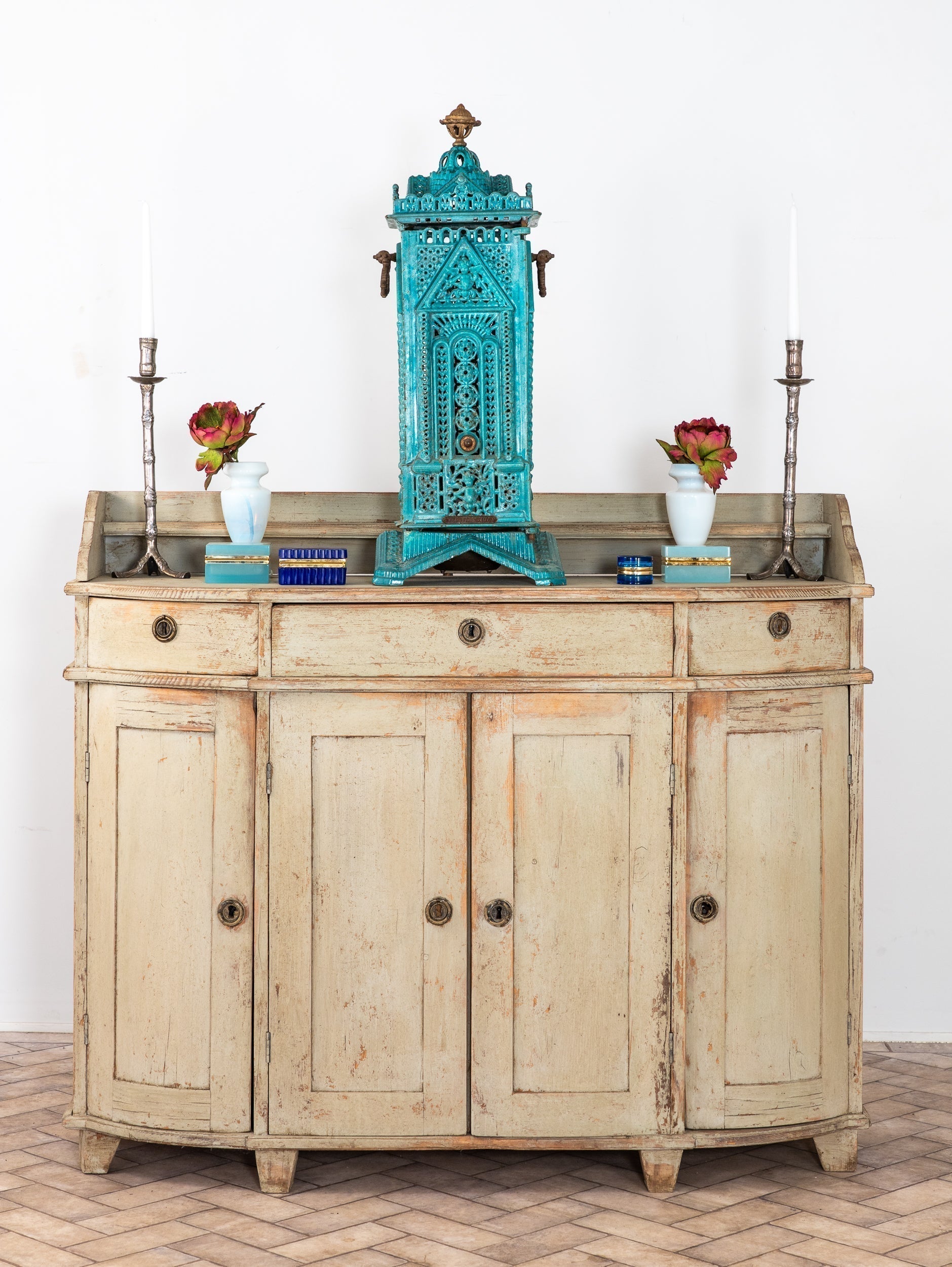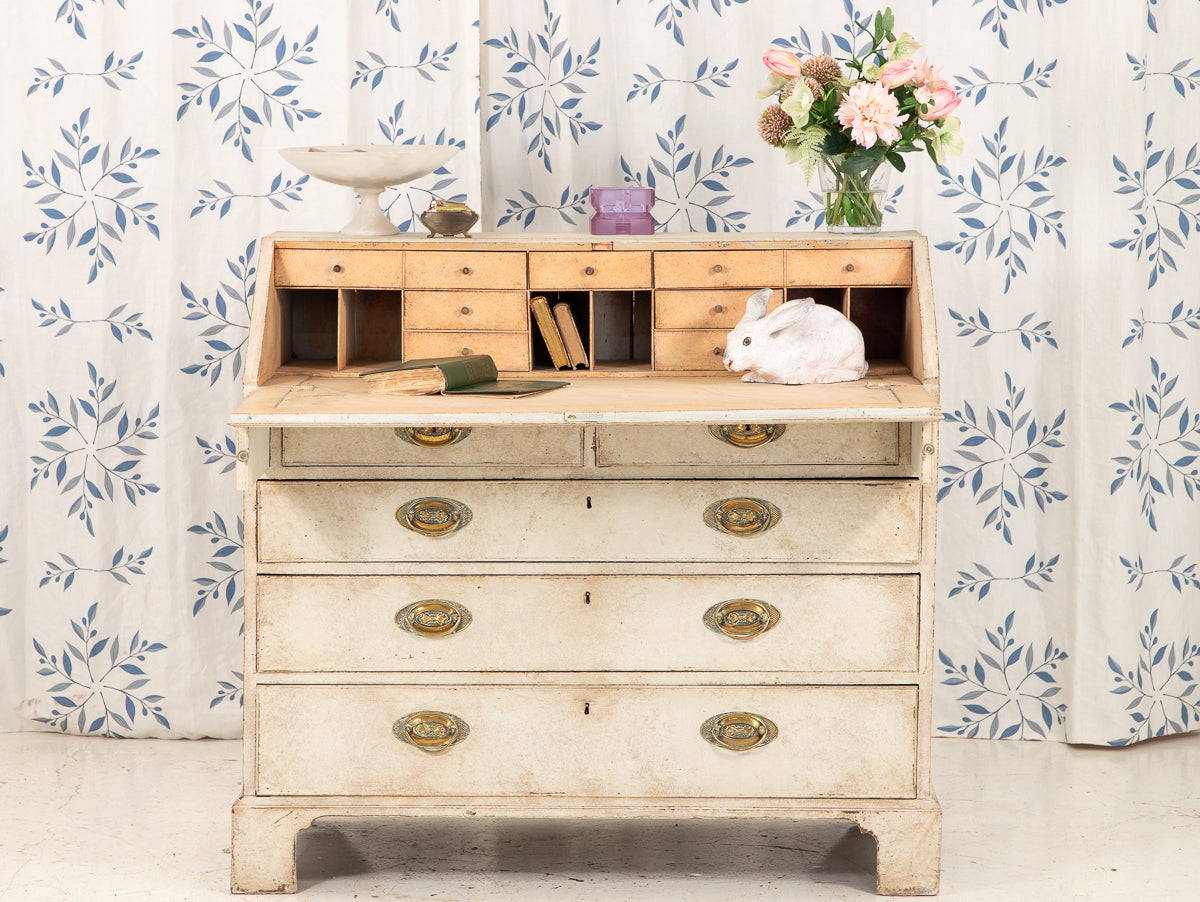We love that this season invites hospitality, gratitude, and shared tradition. We also love that antiques support these moments by grounding them in history and giving them continuity. When you set your holiday table with antiques, including silver, transferware, candlelight, and classic textiles, you are shaping an experience that feels intentional, welcoming, and connected to the past.
At Modern Antiquarian, entertaining becomes a blend of function and narrative. Every piece has a past. Every material brings texture and meaning. Curating a table with antiques honors craftsmanship while creating an experience rooted in beauty and history.
Silver
Silver has shaped formal dining rituals for centuries, beginning in the Renaissance when households commissioned silver tablewares as symbols of refinement and stewardship. By the 17th and 18th centuries, British silversmiths perfected casting, chasing, and repoussé, producing wares meant to be used often and polished regularly. Before electricity, silver amplified candlelight, contributing warmth and atmosphere to dining rooms. Families treated these objects as functional heirlooms, carrying them from one generation’s table to the next.

Antique Silver Domed Dish Cover
For Thanksgiving gatherings, incorporating silver continues this tradition of etiquette and legacy. Modern Antiquarian’s Antique Silver Domed Dish Cover, made in 19th-century England, conjures the era when domed covers kept roasts warm during long ceremonial meals. Its weight, handle detailing, and patina speak to Victorian craftsmanship. The Silver Plate Footed Vase with Scalloped Lip, crafted in India in the 2010s, offers a contemporary counterpart that still honors classical form. Its tulip silhouette and scalloped rim make it a striking vessel for autumn branches or holiday florals.

Silver Plate Footed Vase with Scalloped Lip, 2010s India
Transferware
Transferware emerged in the mid 18th century when English potteries began using copperplate engravings to apply detailed scenes to ceramic bodies. This technique allowed decorated tablewares to be produced at scale, expanding access beyond the aristocracy. In the early 19th century, firms like Wedgwood refined the method further with cobalt-based pigments, creating flow blue, a style in which pigment intentionally blurred during firing. Collectors prize this feathered effect, since no two pieces flow the same way, and designs range from pastoral landscapes to neoclassical motifs.

Wedgwood Flow Blue Dinnerware
For a Thanksgiving table, flow blue introduces a deep, moody palette that pairs well with candlelight and seasonal textures. Modern Antiquarian’s Wedgwood Flow Blue Dinnerware, circa 1860, includes plates, serving dishes, and a soup tureen. Its gentle fading and cobalt tones make each place setting feel storied and grounded
Candleholders
Before electricity, candlelight was essential to daily life and candlesticks often reflected social status. In the 17th and 18th centuries, materials varied widely from iron and brass for everyday use to carved wood, pewter, or gilded finishes for more formal rooms. As Baroque, Rococo, and Neoclassical styles evolved, candlestick silhouettes changed alongside furniture and architecture. Their design history offers a compact view of how people lived, worked, and gathered.

1970s Black & Gold Candle Holders
Industrialization in the 19th and early 20th centuries introduced machine turning, which produced cleaner lines and geometric profiles later found in the Art Deco and midcentury periods. Even after electricity became standard, decorative candlesticks remained fixtures in dining spaces because they continued to provide atmosphere and ceremony.

Spanish Gilt Iron Triple Candlestick or Stand, 1950s
Modern Antiquarian’s Black and Gold Candle Holders, with their tapered square columns and carnival glass sheen, reflect this later lineage. The painted pussy willow motif echoes the era’s interest in nature interpreted through bold, modern design. The 1950s Spanish Gilt Iron Triple Candlestick draws from a far older tradition. Spain’s wrought-iron craftsmanship, rooted in medieval guilds, remained strong into the mid 20th century. Its gilt finish and triple-arm silhouette echoes forms once used to anchor dining tables and hallways.
Linens and Textiles
Textiles have shaped the aesthetics and etiquette of entertaining for centuries. In medieval and Renaissance Europe, linen (woven from flax) became the foundation of formal dining because it was strong, absorbent, and easily brightened through bleaching. Wealthy households commissioned damask cloths with woven motifs, while plain-weave linens served everyday meals.

Pair of Linen Pillows
By the 18th and 19th centuries, global trade introduced cotton on a wide scale. Printed chintz, muslin, and embroidered cottons expanded the possibilities for tablecloths, runners, and napkins. Victorian households layered textiles intentionally: linen for structure, lace for ornament, and embroidered napkins to mark special occasions. Each material carried a specific function and mood.
By the 18th and 19th centuries, global trade introduced cotton on a wide scale. Printed chintz, muslin, and embroidered cottons expanded the possibilities for tablecloths, runners, and napkins. Victorian households layered textiles intentionally: linen for structure, lace for ornament, and embroidered napkins to mark special occasions. Each material carried a specific function and mood.

Aandaz Bee Honeycomb Linen 20x20 pillow
In the early 20th century, hotels popularized crisp white damask cloths, while homes embraced monograms and hand-embroidered holiday sets. Midcentury tastes shifted toward relaxed entertaining, bringing textured weaves and simple linens to the forefront.
Today’s styling draws from all of these traditions. Textiles set tone, add vertical definition, and introduce softness. Pillows placed on end chairs or host seats also add comfort, structure, and visual rhythm. Modern Antiquarian’s Pair of Antique Belgian Linen Pillows showcase the integrity and texture of historic flax weaving. The Aandaz Bee Honeycomb Linen Pillow, with its hand-beaded honeycomb motif, recalls the decorative needlework once reserved for ceremonial textiles. These pieces contribute warmth, depth, and a quiet sense of occasion.
Brass
Brass has been appreciated for its durability, warm tone, and versatility for thousands of years. Ancient households used brass for candlesticks, vessels, and architectural fittings because of its resistance to corrosion and status as an art form. Turned candlesticks, repoussé chargers, and finely cast hardware reflected evolving tastes from Georgian restraint to Rococo ornament and Victorian intricacy.

Late 19th Century French Scrolled Brass Chandelier
The 19th century invited experimentation with brass paired alongside crystal and wirework. Modern Antiquarian’s Late 19th Century French Scrolled Brass Chandelier captures this era beautifully. Its airy wire structure and faceted pendants would have scattered candlelight in soft, shimmering patterns over elegantly displayed table settings.

Mid 20th Century French Brass Trolley
By the mid 20th century, brass played a central role in entertaining culture. Sleek bar carts and trolleys became hallmarks of gracious hospitality. The Mid 20th Century French Brass Trolley, with its lift-out tray, bottle holders, and smooth casters, reflects a moment when entertaining became mobile, flexible, and effortlessly stylish.
Whether in lighting, serving furniture, or sculptural accents, brass brings warmth, reflectivity, and centuries of craftsmanship to the seasonal table.
Crystal
Crystal has long been associated with celebration and refinement. When English glassmakers in the late 1600s infused glass formulas with lead oxide, they created material with exceptional clarity, weight, and brilliance. By the 18th century, workshops in Bohemia, Ireland, and France elevated crystal cutting into an art, producing vessels with deep faceting, crisp engraving, and precise polishing. Each region crafted its own distinctive style, and crystal quickly became integral to fine entertaining.

Modern Handkerchief Glass Dish
Through the 19th and early 20th centuries, crystal decanters, compotes, bowls, and stemware marked holidays and life’s milestones. Modern Antiquarian’s Modern Handkerchief Glass Dish demonstrates early 20th century experimentation with sculptural clarity. Its six-pointed, folded form and fluid edges mimic fabric in motion, reflecting an era that favored expressive glasswork over heavy cutting. On a Thanksgiving table, it serves beautifully as a dish or centerpiece.
Crystal remains one of the most intuitive ways to introduce light, elegance, and heritage into entertaining.
Creating a Table that Invites Conversation
The beauty of entertaining with antiques lies in the way these pieces spark dialogue. Guests notice craftsmanship. They ask questions. They connect to the stories behind each object. An antique table setting becomes a curated experience, not simply decoration.
Mixing eras, textures, and materials adds visual depth. Pair silver with stoneware. Place candles beside ceramic vases. Add seasonal foliage within an Italian Alabaster Compote. Let textiles soften the scene and furniture ground it. The result is a table that feels collected, meaningful, and alive with intention.

A Thanksgiving Table with Heritage
Antiques bring history into the heart of the home. When you set the table with objects that have been cherished for generations, you honor both the past and the people gathered around you today. Modern Antiquarian’s collection offers one-of-a-kind pieces that combine artistry with heritage. Whether your gathering is formal or intimate, antiques add story and soul to every detail.
Ready to curate your Thanksgiving table with pieces that inspire conversation and elevate tradition? Explore the full Modern Antiquarian collection and bring artistry into the moments that matter most.
Discoveries by The Lifestyle Historian



